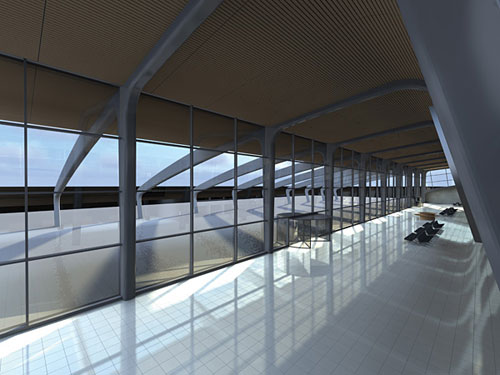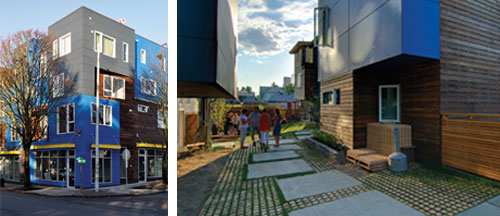Open BIM: Interdisciplinary Collaboration Strategies for a Plural World
BIM Overview
The National Institute of Building Sciences (NIBS) through its Building Smart Alliance program, has developed this working definition:
"BIM is a digital representation of physical and functional characteristics of a facility and a shared knowledge resource for information about a facility forming a reliable basis for decisions during its life cycle; defined as existing from earliest conception to demolition."
This definition embodies several important shifts in thinking compared to the traditional preparation of drawings and specifications.
First, BIM goes beyond just the physical information contained in a drawing but also includes the functional information of the various parts and pieces of a building or facility. So, in addition to traditional building component information such as size, materials, and finish, other useful information can be captured related to things like cost, scheduling, maintenance, and warranty. This is done by treating each element in a building as an electronic "object" that has all of this other relevant information embedded in or linked to it.
 |
New Leon Airport Terminal: The construction team used an integrated system to link all departments allowing them to work interactively on a single project file and share progress in real time Source: ACCIONA I+D+I |
Â
Secondly, this definition makes the electronic building model a "shared resource." Architects and engineers, obviously, have always produced drawings and specifications with the intent of sharing them for the construction and, as appropriate, the maintenance and operation of a building. But the intent here is to make the BIM model something more - namely a common decision making resource continuously available to everyone involved in the building or facility.
Third, is the intent to make the BIM database and process a long term "living tool." That means it is ideally available and kept current with input from multiple people from the earliest design concept, through full documentation, into construction, during the building operation and ultimately used to "de-construct" or demolish the building. Â
The beneficiaries of the above definition can be a large group of people over the life of the building. This group could include owners, planners, realtors, appraisers, mortgage bankers, designers, engineers, estimators, specification writers, safety inspectors, occupational health specialists, environmentalists, contractors, lawyers, contract officers, sub-contractors, fabricators, code officials, operators, facilities managers, maintenance personnel, risk managers, renovators, first responders, demolition/deconstruction contractors and perhaps even others. Each of these people has their own view or use for the information in a BIM model. Some contribute information to the model, some simply read and use information from it, while some may do both.
Urban Trees Mixed-use Development Project |
 |
The Urban Trees project designed by b9 architects is a winner of an AIA Seattle "Future Shack" award. Image: b9 architects inc, Photo: Andrew von Leeuwen |
b9 architects have transformed a blighted Seattle lot into an award-winning commercial/residential complex featuring flexible "live-work" units, green design, and a plaza on which pedestrians and cars can coexist. Bradley Khouri of b9 architects designed the 11-unit project to create a vibrant community enriched by commercial businesses such as the restaurant/bar on the corner. Designed with BIM software, Urban Trees is a winner of an AIA Seattle "Future Shack" award recognizing progressive solutions for urban living. Five of the 11 Urban Trees residences are live-work units. The first floors are retail spaces opening onto the sidewalk, and the upper three floors serve as family living spaces in a variety of configurations. In the back, homes open into a courtyard and a woonerf, a plaza shared by pedestrians and cars (a concept borrowed from the Dutch). BIM was instrumental in helping b9 save time and money, more easily manage a complex design project, maximize sustainability, and win over key stakeholders. "BIM helped us execute at every step, including orienting Urban Trees' windows and courtyard to optimize solar energy, producing special faux-watercolor renderings, and supplying all the necessary visualizations to expedite the public review." Khouri added that it would have cost his firm $3,000 each to create water-color style renderings like the ones he produced digitally plus $1,500 to commission solar studies he also performed in the BIM model. Urban Trees buildings are made from sustainable materials, including facade panels of seasoned fir boards reclaimed from old buildings, floors made of recycled pallets, and concrete courtyard pavers recovered from a car dealer's surplus. As befits its name, the project provides and preserves cherry, linden, maple and black hawthorn trees on the site. |









